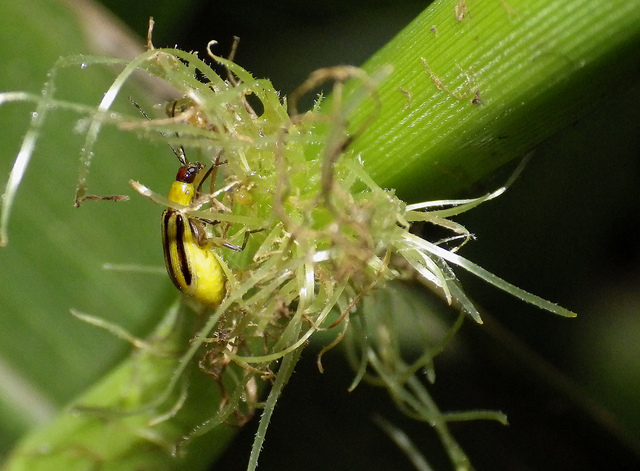Seed companies and farmers didn't follow scientists' recommendations
about growing a type of corn that had been genetically engineered to
produce its own pesticide, and now the beetle they were battling has
developed an immunity to the corn and is gorging on it with abandon.
This type of corn (Bt corn) accounts for three-quarters of all corn
grown in the US.
By the turn of the millennium, however, scientists
who study the evolution of insecticide resistance were warning of
imminent problems. Any rootworm that could survive Bt exposures would
have a wide-open field in which to reproduce; unless the crop was
carefully managed, resistance would quickly emerge.
Key to effective management, said the scientists, were refuges
set aside and planted with non-Bt corn. Within these fields, rootworms
would remain susceptible to the Bt toxin. By mating with any
Bt-resistant worms that chanced to evolve in neighboring fields, they’d
prevent resistance from building up in the gene pool.
But the scientists’ own recommendations — an advisory panel
convened in 2002 by the EPA suggested that a full 50 percent of each
corn farmer’s fields be devoted to these non-Bt refuges — were resisted
by seed companies and eventually the EPA itself, which set voluntary
refuge guidelines at between 5 and 20 percent. Many farmers didn’t even
follow those recommendations.


No comments:
Post a Comment